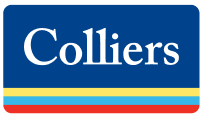
Onboarding isn’t just about introductions and paperwork—it’s about ensuring new hires feel equipped and engaged from day one. In this episode of the Employee Onboarding Podcast, Erin Rice speaks with HR expert Caroline Yost about the one thing most onboarding processes get wrong: a lack of clear expectations.
Why expectations matter
Most companies assume that a well-structured onboarding plan means scheduling meetings and providing access to key tools. However, without clear expectations, employees often feel lost in their new role.
“Statistically, they say that someone knows within a month if they made the right decision or not,” Caroline explains. “That doesn’t mean they’ll leave immediately, but it does mean their engagement is already being shaped.”
Instead of overwhelming new hires with culture-heavy onboarding, Caroline emphasizes the need for a role-focused approach that provides immediate clarity on responsibilities, deliverables, and success metrics.
A manager’s role in onboarding success
A key factor in successful onboarding? Manager involvement. However, in fast-moving companies, managers are often stretched thin. Caroline shares a simple strategy for balancing autonomy with support:
“For more experienced hires, I tell them, ‘Here’s your end destination. You can take the Ferrari, the bike, or stop along the way—it’s up to you. We’ll check in at key points, but the path is yours to shape.’”
This method fosters ownership while ensuring new employees aren’t left without guidance.
Scaling onboarding for growth
As companies grow, onboarding challenges multiply. Caroline’s biggest piece of advice for HR teams preparing for scale?
“Every process you create—ask yourself, does this work at 3x the headcount?”
If a system isn’t scalable now, it will only become more inefficient over time. Investing in automation and structured workflows early on can prevent major bottlenecks later.
Setting the right tone from day one
Onboarding is about setting new hires up for long-term success. Companies can improve engagement, retention, and overall employee satisfaction by focusing on clear expectations, structured support, and scalable processes.
Your path to better onboarding starts here.
Join companies who’ve cut onboarding time in half with Process Street’s easy-to-use workflow tools.
Read the full transcript below:
Erin Rice:
Welcome to the Employee Onboarding Podcast, where we unpack great onboarding ideas and best practices from the world’s top HR practitioners and thought leaders. At Process Street, that starts with our mission to make work fun, fast, and faultless for teams everywhere.
My name is Erin Rice, and I’m the People and Operations Specialist here at Process Street. Today, I’m joined by Caroline Yost.
Caroline is an HR professional who has spent her career building, developing, and leading the people function at fast-growth startups, primarily Series A, B, and C. With an emphasis on high-performance output, she has experience building key elements of the employee life cycle along with necessary tech stacks, including talent development, organizational design, conflict mediation and resolution, employee relations, workforce planning, performance management, benefits and compensation, and learning and development.
Her vision, based on growth stage, focuses on aligning business needs with employee needs while preparing for scale.
Thanks so much for joining us today, Caroline.
Caroline Yost:
Thanks for having me.
Erin Rice:
Before we dive in, I’d like to ask an icebreaker question. Do you have a recent productivity hack that you could share with us?
Caroline Yost:
Yeah, so I recently moved away from handwritten to-do lists. This year, my partner and I traveled a lot—for work, weddings, family obligations, etc.—and I often wasn’t working at my desk. I didn’t want to lose productivity just because I forgot my notebook.
Now, I use my inbox and Slack as a checks-and-balances system against my to-do list. Slack has introduced reminders and task list features, which I started noticing in 2024 (though they might have launched earlier). I also use the Notes app to track my MITs—Most Important Things—a productivity method I learned from LifeLabs. I’m a big LifeLabs fan.
At the same time, I keep emails unread or marked in Slack if I need to get back to them. I also have a color-coded inbox system to prioritize urgent tasks, end-of-day tasks, and long-term goals.
Erin Rice:
That’s amazing. Have you seen the list feature in Slack? You can add tasks directly to a list now.
Caroline Yost:
I saw it, but I haven’t engaged with it yet. Even moving away from writing everything down felt strange. There’s something satisfying about physically crossing things off a list—it gives you a serotonin boost.
I haven’t fully switched to Slack’s task list because our company operates 90% on Slack. My inbox is for longer-term conversations, while Slack is for real-time, day-to-day communication, as if we were sitting next to each other. I might try it, but right now, since we’re in Q4 and planning for 2025, I don’t want to disrupt my workflow too much. There’s already a lot going on.
Erin Rice:
Wouldn’t say HR professionals are Type A?
Caroline Yost:
Right?
Erin Rice:
That’s amazing. Well, I wouldn’t be doing my job if I didn’t mention that at Process Street, we have a “one-off task” feature. I use it to track daily, weekly, or miscellaneous tasks that aren’t connected to a larger process or project. It helps me stay really focused, so I don’t actually use the Slack list feature, but it’s nice to have as a backup.
Caroline Yost:
Yeah, I think Slack is shipping good updates, but we’re still adjusting to what it means to work in a fully digital workplace. Even though it’s been three-plus years, I don’t think we’ve figured it out completely.
I was in San Francisco with my team last week, and the number of conversations and decisions we powered through in person was incredible. Not that I’m advocating for return-to-office—I love remote-first work. That might be a hot take from an HR person, but it’s real.
There’s just something about being able to lean over and say, “Hey, did you see that email? Can we make sure we get to it by the end of the day?” Instead, when you’re remote, you’re Slacking someone who might be three hours behind you, and things can get lost in translation.
Erin Rice:
Yeah, for sure.
Erin Rice:
Let’s dive into employee onboarding. What do you think makes for a great onboarding experience?
Caroline Yost:
At the beginning of my career, I built a whole experiential, week-long onboarding process that was primarily designed for the employee. But my view on onboarding has shifted over time.
A great onboarding experience ensures employees have everything they need to be successful in their job. Statistically, people know within a month whether they made the right decision about a job. That doesn’t mean they’ll leave in 30 days—especially in 2024, where the job market is still uncertain—but it does mean that first impressions matter.
Instead of overwhelming new hires with everything all at once, I now focus on giving them what they need when they need it. The key to onboarding success is setting clear expectations, ensuring managers are accessible, and providing documentation that supports employees in their first month, two months, and three months.
Erin Rice:
I love that you mentioned the importance of making employees feel safe. How do you create that sense of safety for new hires?
Caroline Yost:
I used to think you could force it. But then we entered the world of Zoom, and suddenly we had months of Zoom happy hours—which people eventually admitted they didn’t like.
Creating psychological safety has to be organic. It starts with small moments, like beginning meetings with a few minutes of casual conversation before diving into the agenda. I’m infamous for saying “hobnob”—I don’t even know if it’s a real word. I think I even did a training called The Power of the Hobnob!
Erin Rice:
What do you think most onboarding programs are missing?
Caroline Yost:
Clear expectations.
A lot of companies schedule meetings for new hires, but they don’t clarify what success looks like. Employees don’t always know the company vision, how their role fits into it, or what their goals should be. This is especially true for companies ranging from 14 to 350 employees, where every person plays a critical role.
I believe that everyone in an organization moves the company forward. But if onboarding doesn’t establish that connection between the role and company objectives, new hires can feel lost.
Erin Rice:
As someone who’s worked in companies of different sizes, what advice do you have for HR professionals preparing for scale?
Caroline Yost:
Everything you do, ask yourself: Will this work at 3x the headcount?
If something is manual but necessary, automate it now, while you still have time. Time is the first thing you lose when scaling.
Also, HR has to balance business needs with employee needs. The things that don’t need your direct attention should be systematized.
Erin Rice:
Caroline, this has been so great. Thank you for sharing your expertise and answering all my questions!
Caroline Yost:
Thank you so much for having me.







 Workflows
Workflows Projects
Projects Data Sets
Data Sets Forms
Forms Pages
Pages Automations
Automations Analytics
Analytics Apps
Apps Integrations
Integrations
 Property management
Property management
 Human resources
Human resources
 Customer management
Customer management
 Information technology
Information technology



Kate Meda
Kate Meda is a Content Marketer for Process Street. She enjoys omitting needless words and making things sound good.